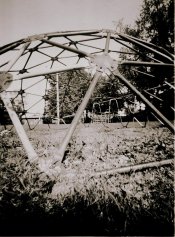Traditionally an Ambrotype is a wet-collodion emulsion coated on a glass plate, sensitized and exposed in the camera while still wet, processed while still wet and then fixed and dried. It is really a thin negative image, but due to the type of developer used results in a negative image that has a rather light tone to the developed silver, and when backed by a piece of black paper or velvet, appears as a positive. There is no reversal, or direct positive type of processing done, it is just the color of the developed image is lighter than the black backing behind the glass plate is darker, making the developed image appear as a positive (by optical comparison to the background).












